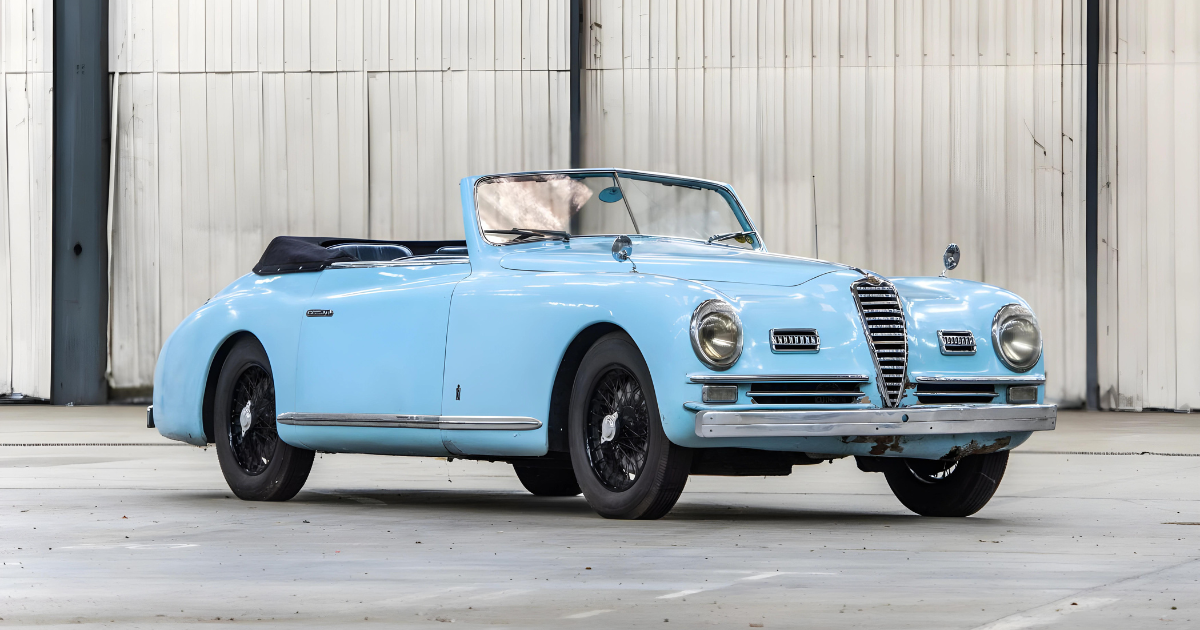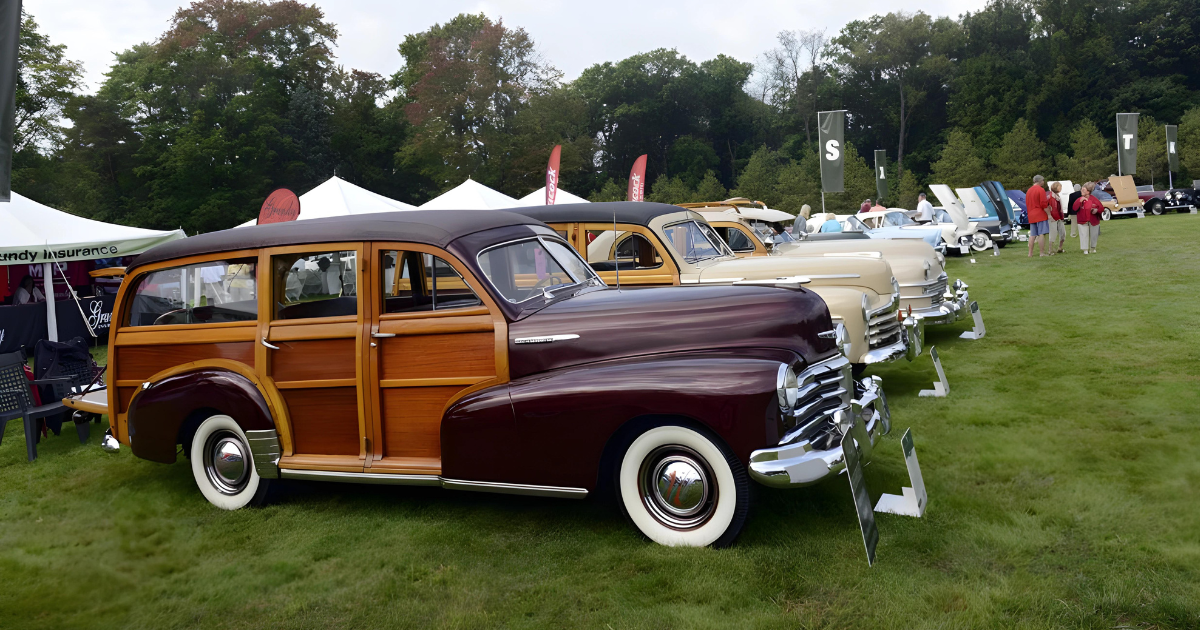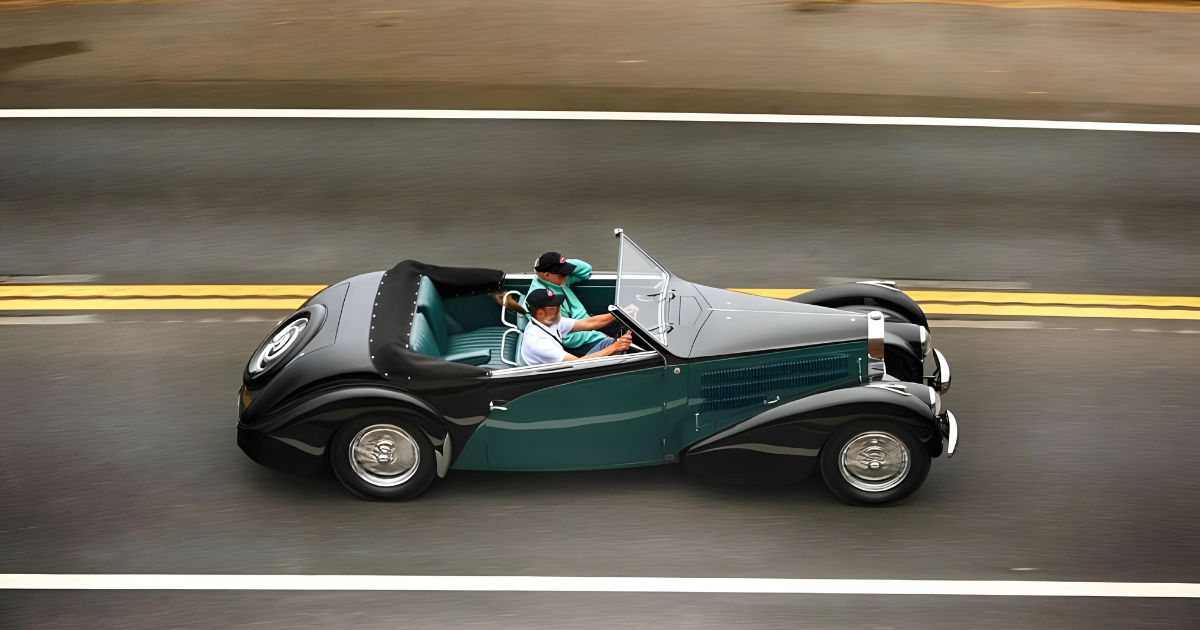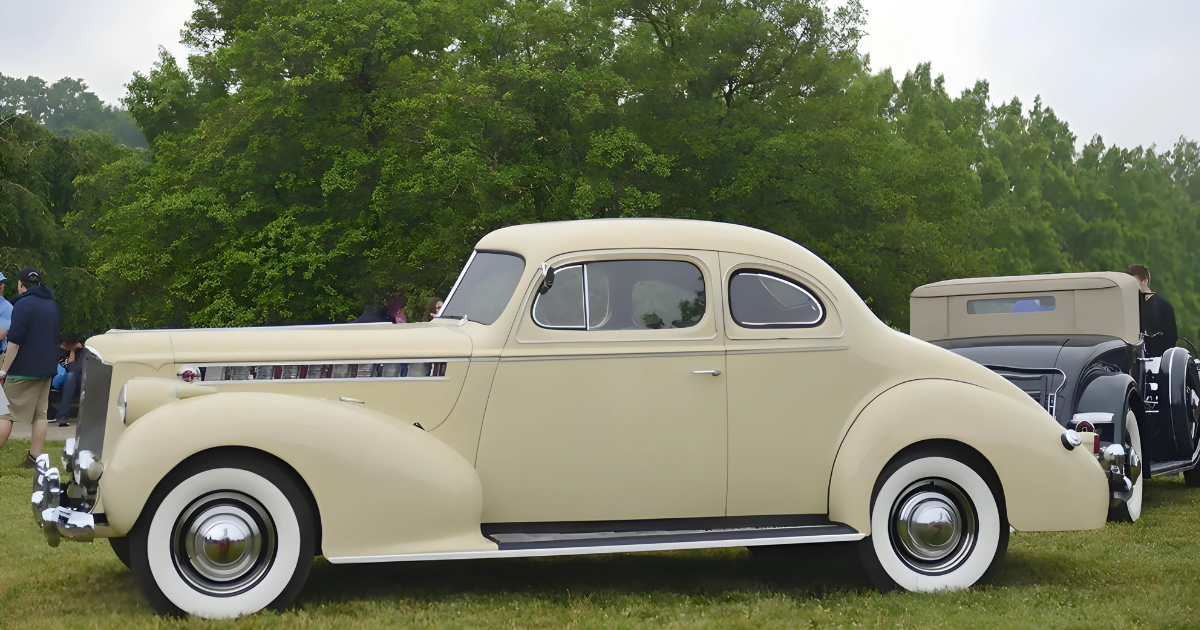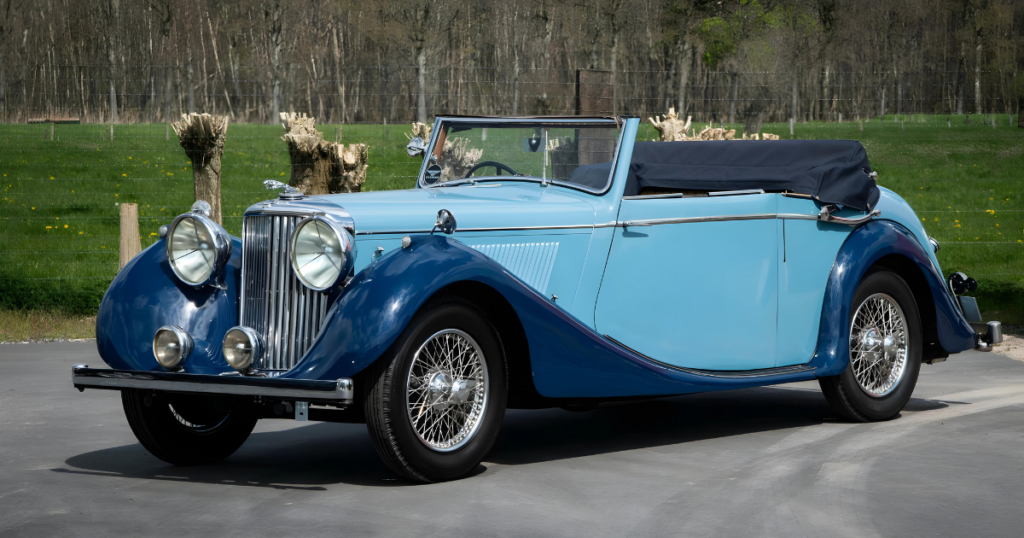
Following World War II, Jaguar Cars, which had been renamed from William Lyons’ SS concern in 1945, continued the trend seen across many British automobile manufacturers by resuming production with a lineup of pre-war designs. These vehicles, intended as interim models, helped bridge the gap until a completely new generation of Jaguars could be developed and introduced. Among this post-war lineup were the compact 1½-Litre and the more robust 2½/3½-Litre models, which have come to be known retrospectively as the ‘Mark IV’.
The 1947 Jaguar Mark IV 3½-Litre Drophead Coupé exemplifies Jaguar’s dedication to blending performance and elegance. With a spacious 120-inch wheelbase and a separate chassis, it maintains mechanical robustness. Equipped with a front beam axle and rear live axle suspension system supported by semi-elliptic springs, it reflects typical design of its era. Its Girling mechanical brakes provide reliable stopping power, despite using relatively primitive technology by today’s standards.

The coachwork of the Mark IV was crafted entirely from steel, a decision that contributed to both its durability and its distinctive appearance. Customers had the option to choose between a saloon or a drophead coupé variant, both of which boasted the luxurious and well-appointed interiors that would eventually become a hallmark of the Jaguar brand. The interiors featured plush upholstery, elegant wood trim, and an overall design that exuded sophistication and comfort.
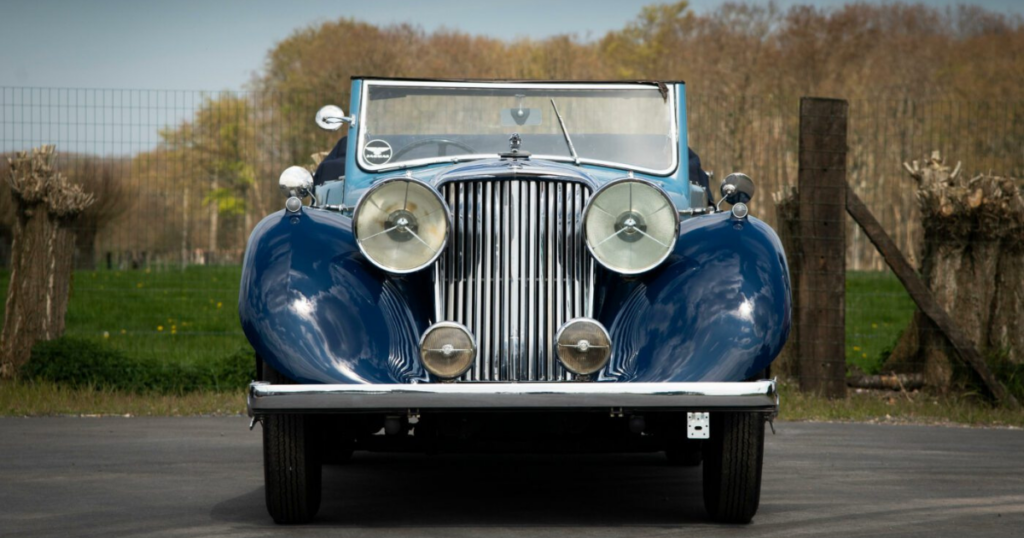
Since 1934, SS Cars had employed Standard’s sturdy seven-bearing six-cylinder engine, further enhanced for Jaguar with a Weslake overhead-valve cylinder head, boosting efficiency and performance. Paired with a four-speed manual gearbox, the 3½-litre engine in the Mark IV configuration was especially potent, propelling the vehicle to speeds surpassing 145 km/h (approximately 90 mph), showcasing Jaguar’s performance prowess.
The Mark IV was more than just a continuation of pre-war designs; it was a symbol of resilience and a precursor to the innovations that would define Jaguar’s future. The combination of its stylish design, solid engineering, and luxurious appointments made it a desirable vehicle among car enthusiasts and a fitting bridge to the more advanced models that were to come.
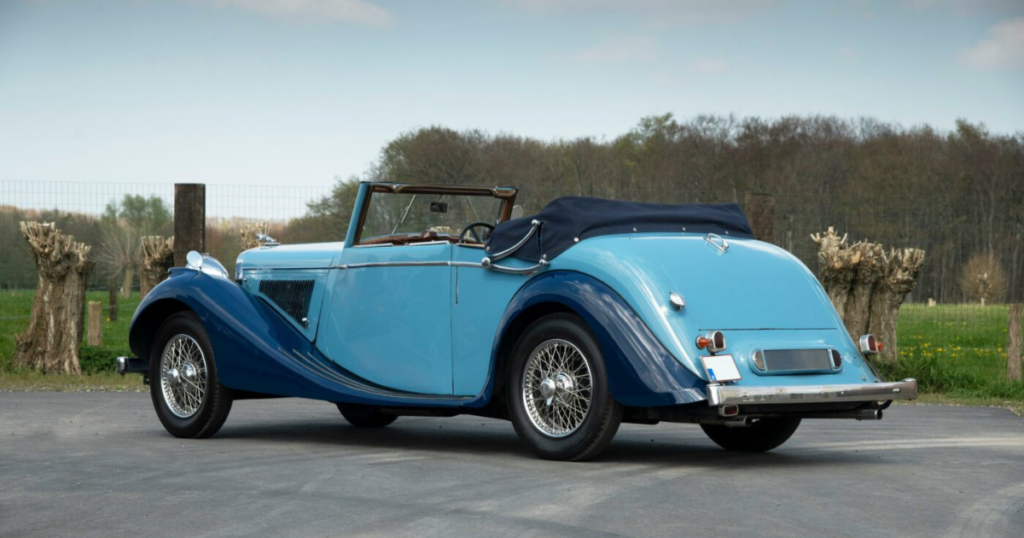
In conclusion, the 1947 Jaguar Mark IV 3½-Litre Drophead Coupé marks a pivotal chapter in Jaguar’s legacy. It showcases the brand’s adeptness at merging performance with luxury, laying the foundation for future Jaguar models. By melding pre-war engineering with post-war advancements, Jaguar sustained its reputation for quality and elegance during a transformative period in the automotive sector. The enduring appeal of the Mark IV, with its graceful design and formidable performance, endures as a beloved classic, epitomizing Jaguar’s ongoing commitment to innovation and excellence.

